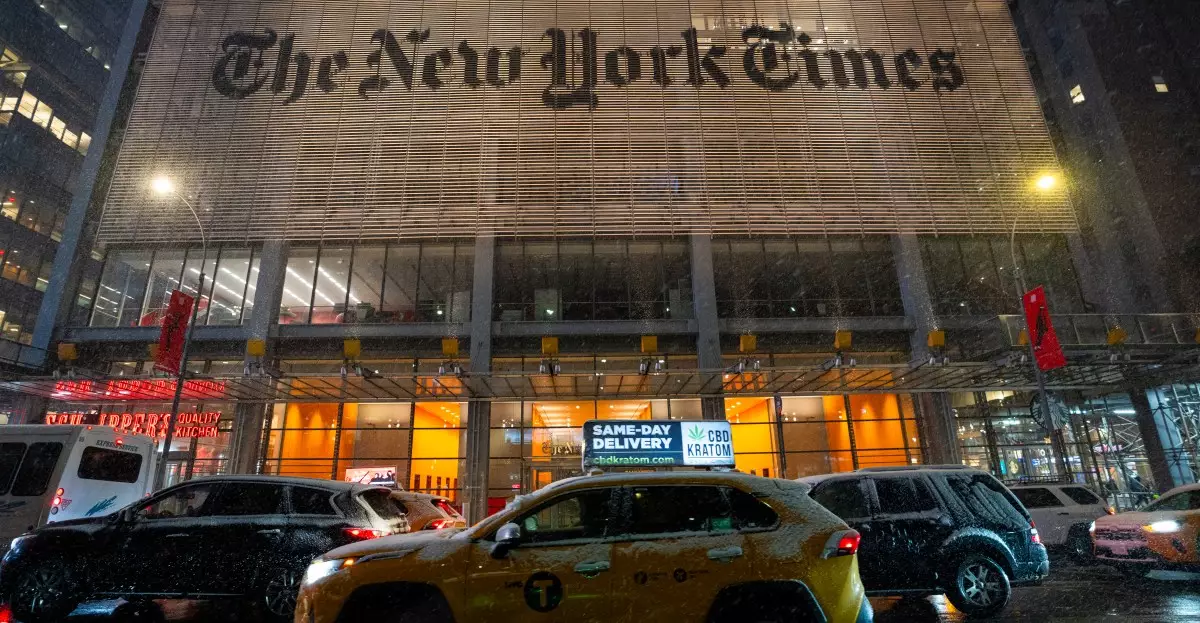As newsrooms grapple with the rapid advent of artificial intelligence (AI), The New York Times has taken notable steps towards integrating such technologies into its editorial processes. Amid the plethora of capabilities offered by AI, the publication has established a cautious yet forward-thinking approach to its utilization. By enabling staff members to use AI tools for editing, crafting headlines, and generating interview questions, The Times aims to balance innovation with its foundational commitment to quality journalism.
AI’s role within the journalistic landscape is multifaceted. It extends beyond merely performing repetitive tasks; AI tools can assist in summarizing content, managing data, and improving workflow efficiency. As such, The Times has initiated an internal training program aimed at familiarizing its editorial and product teams with AI technologies. The introduction of a new proprietary tool, Echo, signifies a strategic pivot towards leveraging AI for summarization and other editorial functions, thus enhancing the productivity of its staff.
However, the integration of AI is not without constraints. The New York Times has set forth explicit guidelines regarding the permissible application of AI within its newsroom. For instance, while staff can utilize AI for generating content drafts or enhancing existing writings, there are strict prohibitions against using these tools to circumvent paywalls or publish unverified material. This policy not only upholds the integrity of The Times’s journalism but also reiterates its commitment to maintaining human oversight and accountability in all published material.
In a detailed memo shared with employees, The Times emphasized that “Times journalism will always be reported, written, and edited by our expert journalists.” This affirmation underlines a critical point: even as AI becomes a valuable asset, the core principles of factual accuracy and editorial discernment remain paramount. Journalistic integrity cannot be compromised for the sake of convenience or speed, and any content produced or modified with AI must undergo thorough vetting by experienced editors.
As The New York Times embraces these cutting-edge technologies, it faces significant ethical and legal considerations. The newspaper is currently engaged in a legal dispute with OpenAI and Microsoft over allegations that ChatGPT was trained using its content without appropriate consent. This situation brings to light the often murky waters of copyright and intellectual property rights in the digital age. Such concerns are increasingly pertinent as more publications begin to explore AI’s potential in news generation and distribution, underscoring the need for clear guidelines and protections around content usage.
To this end, The Times is not alone in its journey toward AI integration. Several other media outlets are similarly experimenting with AI applications, ranging from assisting with grammar and spelling to generating entire articles autonomously. This trend reflects a broader push within the industry to remain competitive and relevant amid rapidly evolving technological landscapes. Yet, with each innovation comes the question of how to best protect journalistic standards while reaping the benefits of AI.
The introduction of AI at The New York Times heralds a new era for journalism, one in which human creativity and technological efficiency can coexist. The initiative to train staff on AI capabilities suggests a progressive stance on enhancing productivity while also preserving the ethical framework within which journalism operates. Nonetheless, The Times’s steadfast commitment to human oversight and accountability will likely determine the success of its AI journey.
Looking ahead, it is essential for The New York Times and other media organizations to continually assess the implications of AI on news production and distribution. By establishing clear ethical standards and embracing technology responsibly, the potential for AI to revolutionize journalism remains profound. The balance between leveraging AI capabilities and upholding journalistic integrity will ultimately shape how newsrooms evolve in this dynamic environment.
As the dialogue around AI in journalism continues, The New York Times stands as a case study of cautious optimism—an example that seeks to merge innovation with the unwavering dedication to quality reporting. The future may be uncertain, but the commitment to excellence remains a guiding principle for any publication willing to venture into the realm of artificial intelligence.

